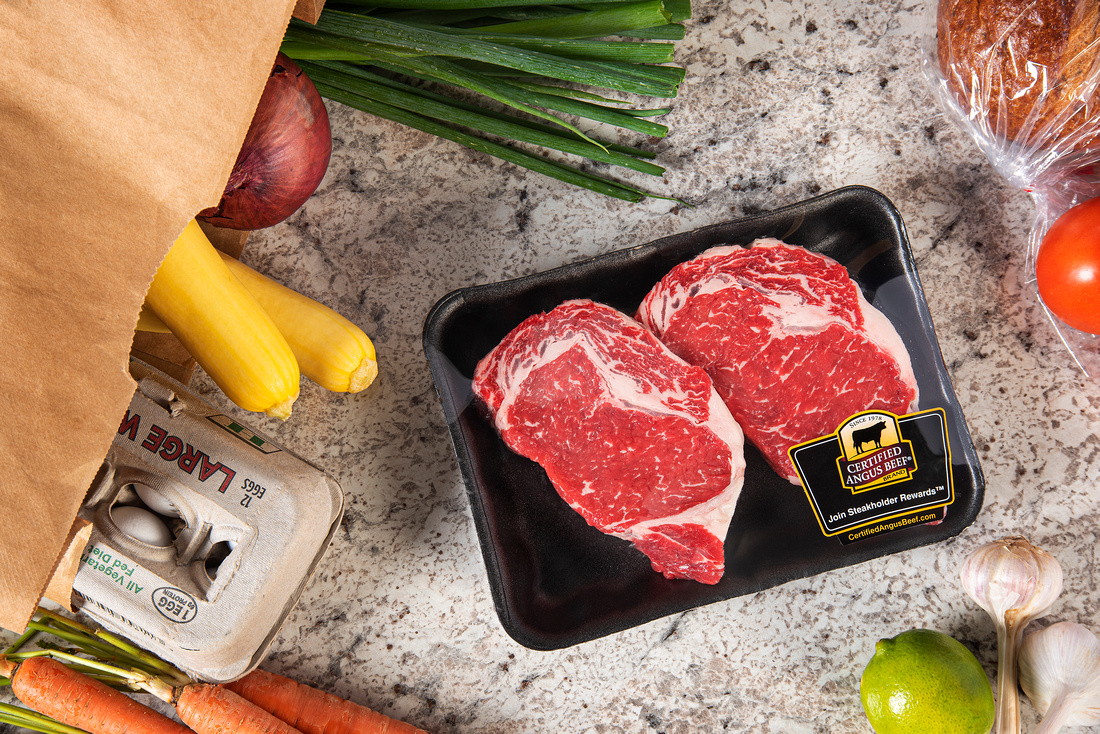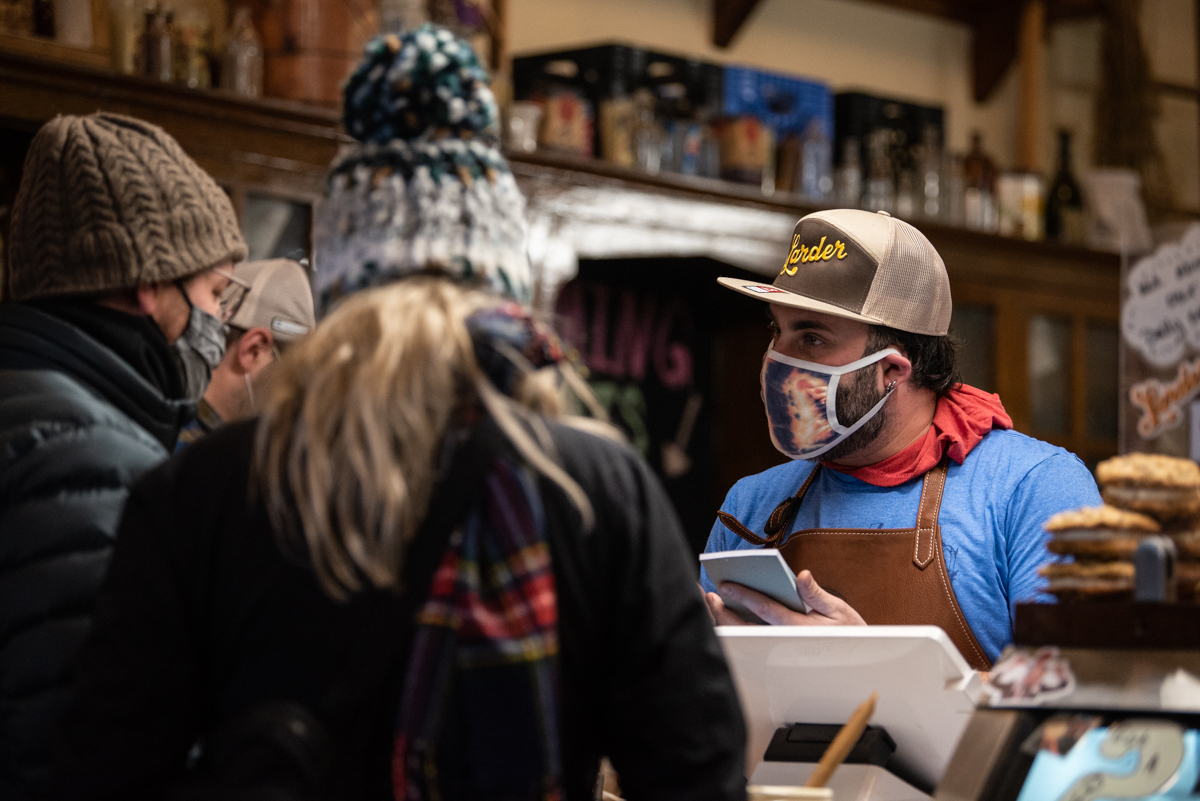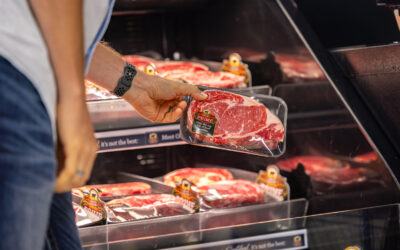
Pandemic underscores beef demand trends
Premium quality beef provides confidence, support
by Abbie Burnett
April 1, 2021
It’s been a year. A long, arduous year since last March when grocery stores and restaurants around the world had their business plans radically changed in just a few days.
As they adjusted day-to-day operations, one beef industry trend resonated louder: “quality matters.”
David O’Diam saw it unfold from his perspective as vice president of retail for the Certified Angus Beef ® (CAB®) brand. Retail beef sales during the pandemic displaced much of the trade usually enjoyed by foodservice.
It took 2.43 million cattle to supply the 608 million pounds (lb.) of CAB cuts sold by 3,000 retail partners in fiscal 2020. That’s more than the volume of all USDA Select beef.
“Most folks were working from home and had more time,” O’Diam said. “They were cooking more than they ever had, so they educated themselves on what quality meat is. That helped drive demand for high quality like Certified Angus Beef to all-time historic levels.”
For a fraction of the price, their expensive nights out became affordable at home, he said, but sales extended beyond steaks. The chuck and round primal cuts gained value on their middle-meat counterparts. Consumers looked for the logo they recalled from their favorite restaurants.
With more entertainment dollars diverted to retail, those who did continue to venture out to dine concentrated on a high-quality eating experience.

Restaurants are still struggling. “There is a big hole to dig out of,” said Sara Scott, CAB vice president of foodservice, but after a long 12 months optimism has returned to the scene.
“The ones that remain are the best of the best. They are nimble and progressive,” she said.
As seating capacity ramps back up, diners are choosing places based on their pre-pandemic reputation.
“Now is not the time for them to cut quality,” Scott says. “If they’re known for that great eating experience, people will be expecting that.”
During the height of closures, regular demand patterns were upended–middle meats deceased in value in relation to ends, like the chuck and round. Last winter, ribeyes were more expensive than tenderloins at one point. It was hard for foodservice meat buyers to predict the market.
“That’s a pretty black-and-white indicator that restaurants drive value to the entire carcass,” she said.
Enjoying more beef at home this past year has greatly educated shoppers, which could sustain higher retail sales of premium beef even as restaurants reopen here and abroad.

On the export front, Cody Jones, CAB vice president of international, said partners around the globe were doubling down on their commitment to quality.
“They’re telling us, ‘yeah, we’re not downgrading at all. We think this is our chance to shine above the competition,’” he said.
Tourism took a hit during the pandemic as did CAB sales where there was a less established CAB retail presence like the Caribbean and some parts of Latin America. On the other hand, Taiwan saw in increase in CAB sales and the brand continued to its one-quarter share of all U.S. beef exports to the Middle East. Four of CAB’s top 10 countries are in Asia and expected to anchor 40% of the world’s economy by 2030 thanks to their surging middle class.
Export sales depend on trade policies, market dynamics and maintaining close relationships.
“Whatever the method, pre- or post-COVID, our job is to help our partners promote the brand, drive demand toward the logo and seek any opportunities we can,” Jones said.
As tourism begins to reopen, that logo recognition from retail stores and restaurants will boost demand across borders.
For some, worldwide lockdowns and quarantines reprioritized the trends in quality that CAB was already watching and helping to promote. What was important a year ago is even more important now.
You may also like
CAB Sets Sales Records, Sees Historically High Brand Acceptance Rates
In an otherwise tough time in the beef business, sales and supply records have been a bright spot. The positive numbers mean that quality beef production has not let up, and beef demand is holding. Consumers have proven the value proposition: the good stuff is worth a little more money, for a better eating experience.
Feeding Quality Forum Dates Set Earlier in August
When you’re feeding cattle, it counts to keep track of every calf, pound and dollar. Beyond the event’s educational sessions, networking between segments of the beef supply chain is invaluable—from feeders and cow-calf operators to allied industry and university researchers.
Gardiners Highlight Service, Strength at Foodservice Leaders Summit
Mark Gardiner and his son, Cole, of Gardiner Angus Ranch offered a boots-on-the-ground perspective for CAB specialists attending the annual event, designed to deliver resources that help train foodservice teams and serve consumers at a higher level.



